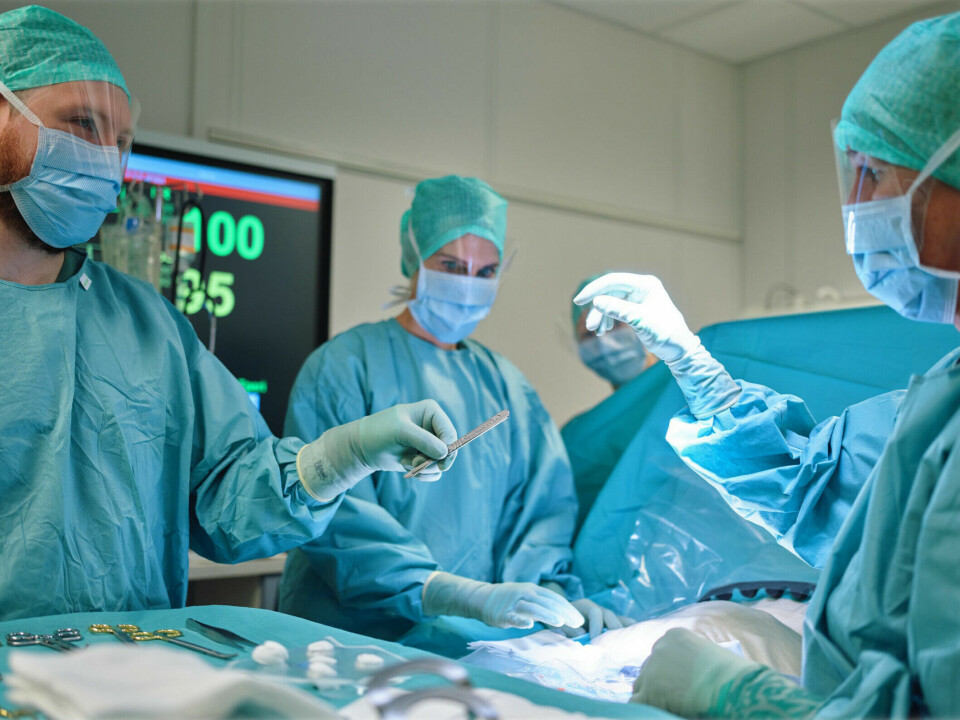THIS CONTENT IS BROUGHT TO YOU BY THE University of Agder - read more

Students in specialist nursing learn a lot from realistic simulations
Research indicates that students need to find the simulations believable to gain any real benefits.
Simulation is an educational method for creating realistic situations that can be practiced. In medical simulation, students get to practice procedures, communication, and collaboration. When they use manikins, or dolls, they are confident they will not harm the patients.
This method of learning is used both at educational institutions and hospitals.
At the University of Agder, a dedicated simulation centre has been built for this purpose, where students can practice on patient simulators. These look like humans and have features such as speech, sweat, tears, and lung and heart functions.
“The government wants to use simulations more in the nursing education. Since it's difficult to secure enough and relevant clinical placements for all students, simulations can offer an alternative learning environment,” says Hege Kristin Aslaksen Kaldheim.
She is the first to have completed a doctorate in surgical nursing at the University of Agder.
Use simulation in education
Kaldheim has conducted interviews with students and newly qualified specialist nurses. She has also organised many simulations as the person in charge of simulations in the training of surgical nurses at Lovisenberg Diaconal University College.

“I'm interested in how students learn through simulations. It's useful to look at how those who use simulations best can plan and organise them to ensure good learning outcomes,” says Kaldheim.
Today, she actively uses simulations in the education of student nurses at master's and bachelor's levels at the University of Agder.
Commonly used, little researched
“Simulations allow students to take more responsibility, such as handling emergency situations, and do more than they are allowed to do in a clinical setting. It's important to customise the exercises to ensure the students can experience a sense of mastery, and it's good for them to learn through activities with other students,” the researcher says.
Simulation has long been an established way of practicing in the nursing profession, but not much research has been done on it.

There has been limited research on how participants learn, and even less on so-called interprofessional simulation. This is a simulation where several specialists simulate together, such as simulations with both anaesthetic and surgical nursing students.
It has been unclear how much competence is transferred from simulation exercises to everyday work.
In her doctoral thesis, Kaldheim interviewed newly qualified specialist nurses who reported a significant transfer value.
“They recalled simulations from training when they encountered similar situations in the real world. They felt better prepared to handle such situations. They also wanted more simulation in their studies to become even better and more prepared,” says Kaldheim.
Positive stress
It is crucial that a simulation is as realistic as possible.
“It's also important that the simulation is well organised and that the students experience positive stress,” says Kaldheim.
Positive stress means that students get to experience the responsibility they will have in their future role as nurses. This provides both learning and a sense of mastery.
Kaldheim says it is important for leaders to recognise how crucial it is for learning to have simulations of high quality. In her research, she discovered important prerequisites for obtaining high quality.
“The participants must feel that the simulation is realistic, and that they are well-prepared and confident in the learning situation. Both participating in the simulation and observing fellow students are important,” she says.
Kaldheim found through interviews that the competence of each individual profession is essential in simulations. The planning and implementation are best achieved when the simulation planners also have expertise in the scenario being simulated.
An addition to practice
Today, the amount of clinical practice required for specialist nursing students during their training is determined by law. This is challenged by the increasing demand for nurses.
Kaldheim concludes that simulations are good, as long as they are well implemented. However, there is still little research on the impact of replacing clinical practice with simulations.
And therefore, simulation cannot simply replace practice. But it can serve as a good addition.
“Good simulations require competent professionals who know how to conduct simulations, and resources to ensure proper implementation,” says Kaldheim.
References:
Kaldheim et al. Professional competence development through interprofessional simulation-based learning assists perioperative nurses in postgraduation acute clinical practice situations: A qualitative study, The Journal of Clinical Nursing, vol. 32, 2022. DOI: 10.1111/jocn.16377
Kaldheim, H.K.A. Interprofessional simulation-based learning used to prepare perioperative nursing students for acute situations, Doctoral dissertation at the University of Agder, 2023.
———
Read the Norwegian version of this article on forskning.no

This content is paid for and presented by the University of Agder
This content is created by the University of Agder's communication staff, who use this platform to communicate science and share results from research with the public. The University of Agder is one of more than 80 owners of ScienceNorway.no. Read more here.
More content from the University of Agder:
-
This researcher has helped more economics students pass their maths exams
-
There are many cases of fathers and sons both reaching elite level in football. Why is that?
-
How we used plants to protect ourselves from evil
-
What is it like for nurses to promote health behind bars?
-
This can make life easier for new maths teachers
-
Norwegian women were burned at the stake here




































